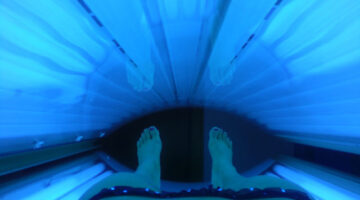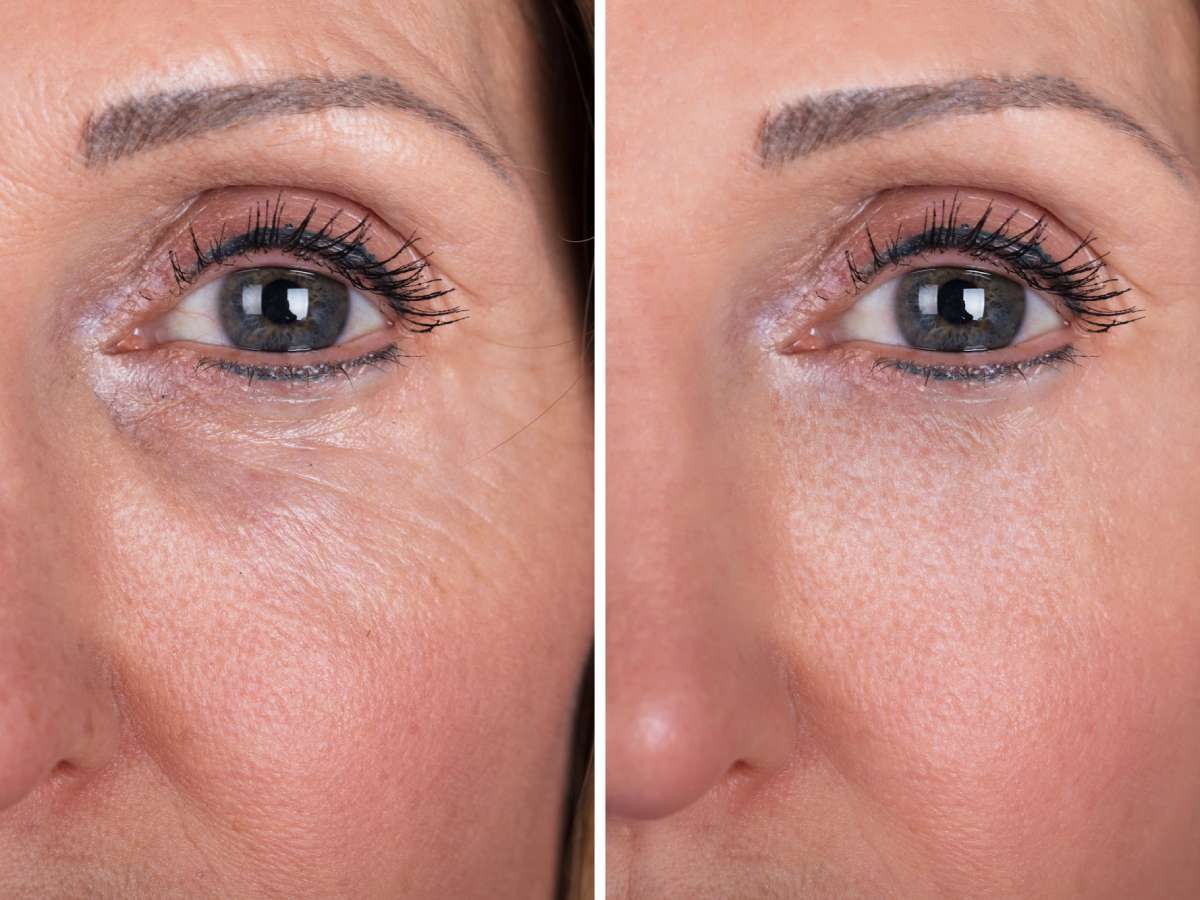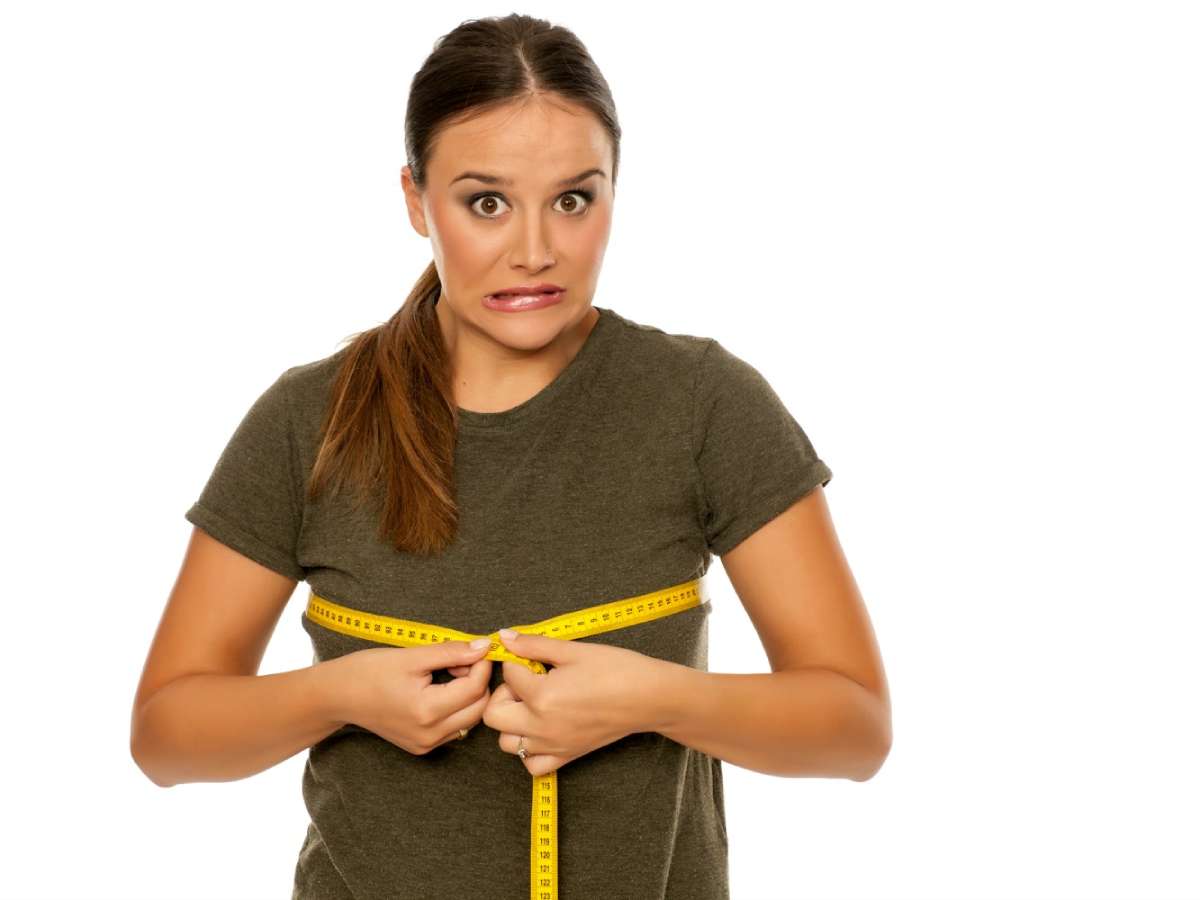
When I first began to research this topic back in early 2000, I was tired of having such fair skin all winter long.
I usually develop a pretty nice healthy tan from limited exposure to direct sunlight during the spring and summer months. But I wasn’t crazy about my skin becoming pasty looking in the winter.
When I really began to look into indoor tanning, I discovered some very scary facts about tanning beds and tanning booths. This information had a dramatic impact on the way I view indoor tanning, so I thought I would share in case anyone else is on the fence about this subject.
Exposure To Sunlight Is Important
The truth is everyone needs a certain amount of exposure to sunlight in order to stay healthy.
Vitamin D helps with the absorption of calcium which we need in order to have healthy teeth and bones.
In fact, sunlight is a great source of Vitamin D.
There is research that suggests that sunlight (in moderate doses) can actually:
- Keep diabetes in check
- Reduce (or eliminate) depression
- Protect against some forms of cancer
- Prevent high blood pressure
Keep in mind, occasional sunbathing with a sunscreen on is not the same as suntanning. Furthermore, indoor tanning provides far more potent rays than tanning outdoors in the sunlight does. So for starters, it’s important to know that differences do exist between the 2 forms of tanning.
Sunlight Today Is Stronger Than It Was In The Past
Unfortunately, our ozone layer is being depleted due man’s use of hydrochlorofluorocarbons and chlorofluorocarbons — both of which deplete ozone much faster than can naturally be recreated by the the combination of sunlight on oxygen.
Because of this, our ozone layer is not protecting us from the ultraviolet rays of the sun as it has in the past!
This means we get a larger dose of ultraviolet rays than is sometimes healthy for us. This can lead to skin cancer if we don’t do what we can to take care of ourselves — such as applying sunscreen when we go outdoors.
Indoor Tanning Facts & Myths

While the owners of many indoor tanning salons will tell you that using their tanning beds (and tanning booths) are safe because their they emit only UVA light, you need to know that they are really not safe.
Here’s why:
- It’s true, UVA light is not as carcinogenic as UVB light. But… UVA light can still cause skin cancer! So while you’ve probably heard that indoor tanning is safe (or at least a safer alternative), there is plenty of evidence to the contrary.
- The UVA light that you are exposed to when indoor tanning is far more concentrated than the UVB light that you are exposed to outside in normal sunlight. The special lights used in tanning salons give off as many as 12 times more UV rays than the sun does — so you’re getting a lot more exposure in a shorter amount of time. Concentrated amounts of UVA light penetrate the skin much deeper than UVB light does, causing your skin to age much faster than it normally would.
- Also contrary to what many salon owners would have you believe, tanning beds and tanning booths do not only use UVA light. The truth is most tanning beds and tanning booths use a combination of UVA and UVB light — which can cause your skin to burn in order to speed up tanning.
See what skin cancer looks like. (WARNING: This gruesome photo shows what recurrent malignant melanoma on the upper back looks like up close.)
The Melanoma Research Foundation says using tanning beds before the age of 35 increases your risk of developing melanoma by 75% and using tanning beds occasionally can triple your chances of getting melanoma.
~ Source
In the end, when you get a tan (whether outdoors or indoors), you’re getting a concentrated dose of ultraviolet light. There is no way around the fact that this increases your chances of getting skin cancer, and it prematurely ages your skin as well.
Based on what the studies indicate, my personal feeling after doing the research is that it is just too risky to use indoor tanning beds and tanning booths these days.
Quite frankly, I plan on living a long healthy life, and indoor tanning just seems like a way to shorten your lifespan to me!
As for me and my pasty looking skin in the winter time… it’s really not that big of a deal after all. Not when you consider the alternatives.
Does A Base Tan Prevent Burning?
Since many people tan for the purpose of getting a “base tan” before they go on vacation or start their summer activities outdoors, I thought this was interesting:
Experts estimate that going out in the sun with a base tan is equivalent to wearing a sunscreen with a sun protection factor (SPF) of 3 to 4. This means the skin can be exposed to up to 4 times more sun before burning than without the base tan. For example, if you would ordinarily burn after 20 minutes in the sun, a base tan might mean you can be in the sun for up to 80 minutes before burning. While it’s better than nothing, it’s a modest benefit. Most recommended sunscreens have SPFs of at least 15 to 30. Since wearing sunscreen is much more effective than relying on a base tan to protect you from burning, the real question is whether having a tan on day one of your vacation is worth the time and expense at the tanning salon before you leave.
~Harvard Medical School
What About Spray Tans?
Dermatologists at the Mayo Clinic confirm that a spray tan (which includes DHA) is much safer than using a tanning bed to achieve a tan.
That’s because the effects on your body from UV radiation are far worse than the effects of occasionally applying DHA to your skin.
The type of UV radiation emitted by most tanning beds is called UVA. It prematurely ages your skin, causing wrinkling and age spots. UVA exposure also raises the risk for skin cancer, including melanoma — the deadliest form of skin cancer. According to a study from researchers at the University of North Carolina, roughly 263,000 skin cancers occurred in the U.S. in 2015 that were attributable to indoor tanning bed use.
~Mayo Clinic
Do You Get Vitamin D From Indoor Tanning Beds?
Unfortunately…. no.
It’s the UVB rays that interact with a protein in the skin to convert it into Vitamin D.
However, tanning beds mostly emit UVA rays — which won’t improve your Vitamin D levels at all.
In effect, the indoor tanning industry is playing with the facts by stressing that people are deficient in Vitamin D (yes, that is true) and claiming that exposure to UV rays from tanning beds is actually good for you (no, this isn’t true).
Specific conclusions they’re making that are NOT true:
- UV exposure is the best way to get your dose of Vitamin D.
- Doctors that warn against UV exposure are unscrupulous liars who are getting paid by the sunscreen industry.
- Tanning is safe and healthy as long as you don’t burn.
- Indoor tanning is best because you can control whether you burn or not.
According to a Cosmetic Chemist:
Their conclusions about Vitamin D deficiency alone are supported by recently published studies in peer reviewed science journals. Even the American Academy of Dermatology would agree. However, none of their conclusions after point 1 (“People are deficient in Vitamin D and that’s causing health problems”) has any objective support at all.
~The Beauty Brains
So this myth has been debunked. By using indoor tanning beds, you’re only increasing your risk of getting skin cancer without receiving any benefit of Vitamin D at all!
Here are 4 other myths about indoor tanning that have been proven untrue.
More Info About Indoor Tanning
See what happened when 20/20 went undercover to see how workers at tanning salons responded to questions about the safety of indoor tanning.
My favorite things to write about are topics that have to do with pregnancy, weddings, saving money, living green, and life with dogs. When I’m not writing, I love to spend time with my husband, read, create 3D artwork and Native American beadwork.




